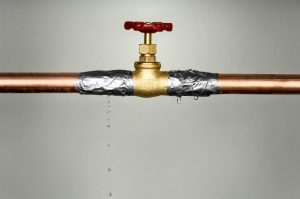There are numerous incidents that can occur and cause damage to your property. However, few can happen quite as easily and cause as much destruction as a leak of water, which is why water damage insurance claims are so commonplace.
If your home has suffered water damage, there are a few key things to keep in mind before moving ahead with an insurance claim. In the guide below, we walk through how to document the damage to support your claim. Read on to learn more.
What Causes Water Damage?
Before we dive into the details of documenting damage for a water damage insurance claim, first let’s talk briefly about how water damage incidents can occur.
We use a lot of water in our homes and properties. The kitchen, bathroom and central heating systems all make use of water, and these are often where water damage incidents can occur.
Leaking pipes, clogged drains and line leaks can all cause water damage. Weather can also be a trigger; frozen pipes can burst, and flooding can fill the home with water, causing extensive damage.
Water damage insurance claims are incredibly common, accounting for around 25% of all home insurance claims. However, it’s absolutely essential you understand how to properly document damage to support your claim. Let’s find out more.
Stop the Leak
Before you start documenting the damage, the first thing you need to do is stop the leak. Your insurance company will expect you to take action to mitigate the damage, failure to do so can harm your claim.
If there is serious flooding from a burst pipe, you need to turn off the water at the stopcock as quickly as possible. If you cannot locate the source of the leak, turn off the stopcock and speak to a plumber.
If the flooding is particularly bad, you may also need to turn off the electricity in your property.
Write Notes
After you have successfully stopped the leak and prevented any further damage from occurring, you should start writing down what has happened. Go into detail about where the leak occurred and at what time, and then note how and when you managed to stop it.
These notes will prove invaluable further down the line, as your insurance provider will likely ask you to confirm and repeat specific details while your claim is being processed.
If you have brought in a plumber to help with a burst pipe, they should provide you with a report. Keep this safe and include it as part of your incident notes.
For damaged possessions, make a detailed inventory of every item that has been affected.
Take Photos
Once you have noted down the key details of the incident, next you need to take photos to record the damage that has been caused.
Start by taking photos of the source of the leak, whether it’s a burst pipe or a leaking radiator. Next, work outwards from the source and document the damage the water has caused. This may include flooring, walls and ceilings.
If your possessions have also been damaged by water, don’t forget to photograph these as well. Additionally, take a photo of your electricity meter if you had to turn it off as a result of the water damage.
When it comes to taking photos of water damage in your property, ensure the lighting is adequate and that every photo is in focus and detailed. Take pictures from various angles and at various times; the more information you provide the more easily your claim will be processed.
Check Your Insurance Policy
After you have carefully documented the damage in your property, you’re almost ready to move forward with your water damage insurance claim. However, before you do so, it’s important that you read through your insurance policy first.
Damage to the structure of your property will be covered by building insurance, while damage to your possessions will be covered by contents insurance. Check to see whether your policy covers the cost of repairs and temporary accommodation should your property be uninhabitable as a result of the damage.
If you have buildings and contents insurance policies with different providers, you are going to need to contact and communicate with both for the duration of your claim.
Insurance policies can be confusing and difficult to understand. Priority Scotland can help you manage your water damage insurance claim at every step, guiding you through the process and acting on your behalf to ensure you receive what you are entitled to.
Conclusion
A leak of water can be extremely destructive and can cause long-lasting damage. The most important thing is to stop the leak as soon as possible and then record all damage in detail, writing down notes and taking photographs. This evidence will be vital as you move forward with your claim.


